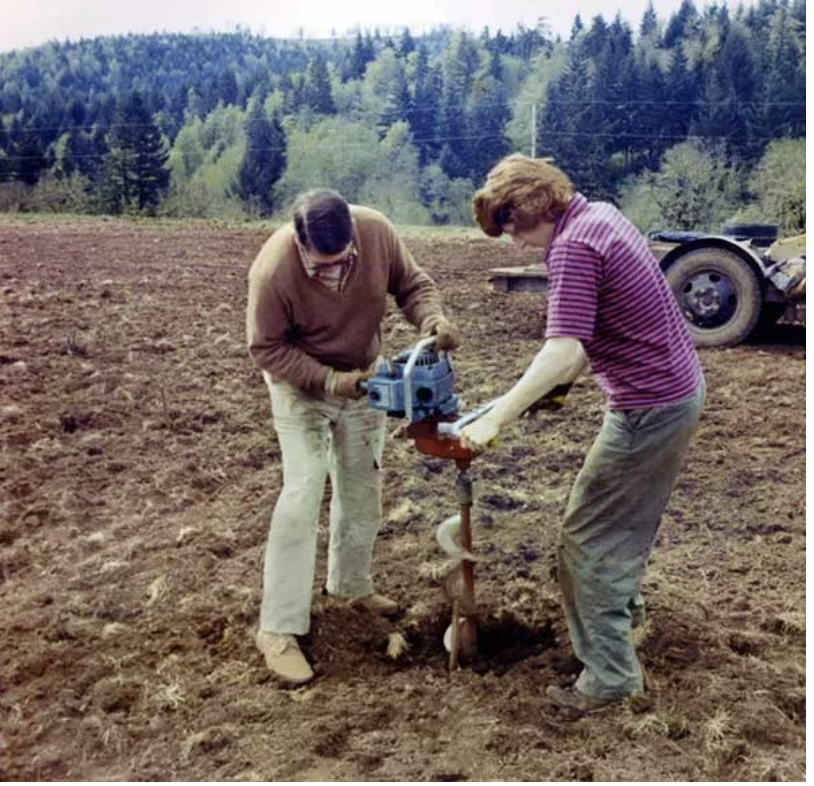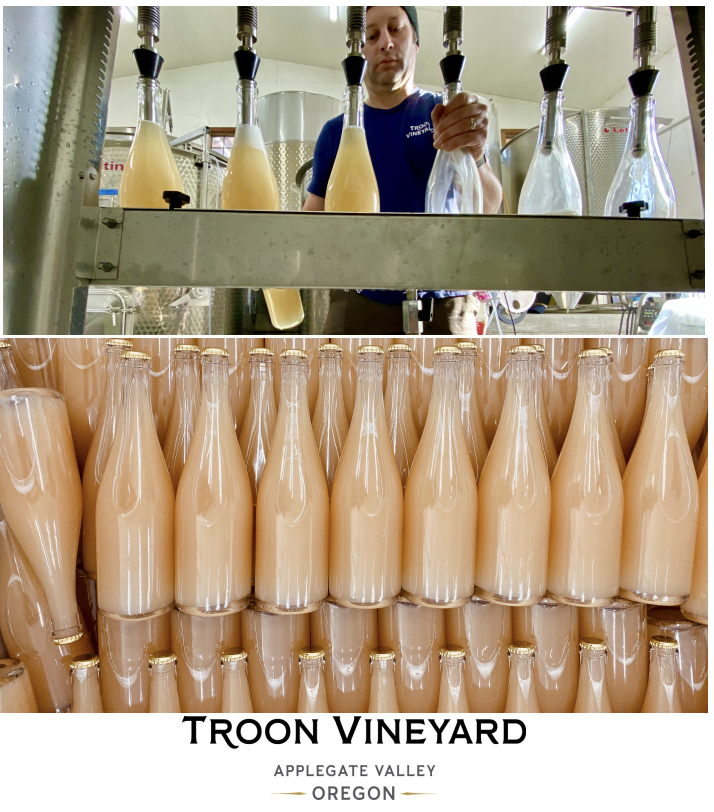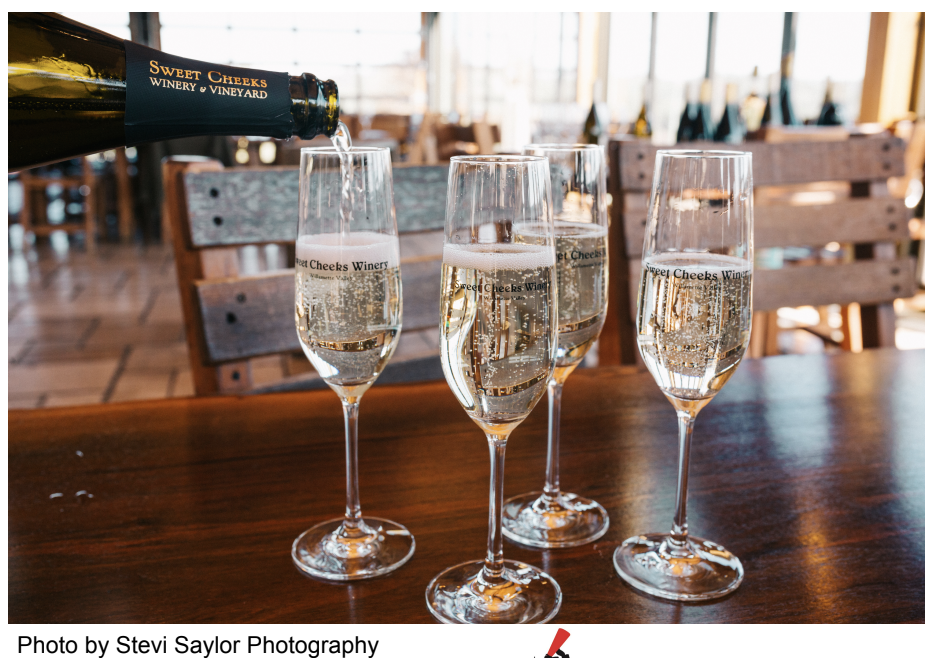Sparkling wine in Oregon

Like bubbles in a glass, the passion to create sparkling wine in Oregon has long been in evidence. But not always at the forefront. That is changing. Winemakers are showcasing Oregon as a leader in producing sparkling wines in addition to featuring reasonable price points.
Wine lovers have long associated Oregon’s wine industry with its exceptional Pinot Noir. And why not? The climates in the Willamette and Columbia Valleys are ideal for growing this most finicky of grapes. The transformation of Pinot Noir grapes into celebrated fine wines was a natural evolution. And, the long, cool growing season produces a crisp and flavorful Chardonnay grape.

Day 2 of the 2021 Wine Media Conference in Eugene, Oregon featured a fun panel discussion on sparkling wine, “Business Up Front, Party in the Back”. The panelists showcased wines from Troon Vineyard – Craig Camp, Willamette Valley Vineyards – Christine Clair and Sweet Cheeks Winery – Jessica Thomas. Award-winning wine writer and photographer L.M. Archer moderated the panel. The evolution of sparking wines in Oregon coupled with the work to produce at the highest standards were evident in the enthusiasm of each panelist.
Willamette Valley and Champagne France
Willamette Valley and Champagne, France literally are aligned at a latitude of 48-49 degrees. Notably, they do not however, share the same wine labeling. Wines that are produced from grapes grown, fermented and bottled in Champagne, France are legally labeled champagne. There are a few wine producers in the world who have dared to challenge that classification. The wineries featured on the panel honor that distinction. They embrace established techniques for creating this most delightful of treats.
Daylight hours are plentiful in the summer and winter. Having a cooler climate with an average temperature of 57 degrees is beneficial. The terroir produces grapes with high bright acidity. Southern Willamette Valley growers have the advantage of sedimentary, mineral rich soils. In addition growers work at higher elevations of approximately 850 feet.
Sparkling wine production
To maximize the acidity and retain the right level of sugars, vineyard owners pick early in the season. As sugar levels rise, acidity levels fall. Wines will become flat without acidity.
Sparkling wines need higher levels of acidity to:
- Boost levels of sulfur dioxide to prevent spoilage.
- Boost colors through the process of ionization.
- Enhance flavors with a delightful burst in wines.
- And allow a sparkler to age in a well-structured manner. (1)
There are 6 methods for the creation of sparklers. The panel focused on the 4 primarily used to produce Oregon sparkling wines.
- Methode Champenoise or referred to as Methode Traditionnelle outside of Champagne. This is the most complex and time consuming method featuring a 2nd fermentation in the bottle.
- Methode Ancestrale or Pet-Nat is similar to the Traditionelle method without a 2nd fermentation. Fermentation starts in a tank. Wine fermentation finishes in the bottle.
- The Charmat/Tank Method produces a sparkling wine that can go from vineyard to table faster by using tanks to produce a mass fermented batch of wine. These wines are aromatic and fruit forward. The 2nd fermentation can be completed within weeks versus months using the Methode Traditionelle.
- Carbonation is created by injection of carbon dioxide. This is the fastest method to produce a sparkling wine. Carbonation produces the lowest volume and quality of bubbles.
Oregon Sparkling Wine Pioneers
Wine pioneers Cal and Julia Knudsen paved the way for Oregon sparkling wine producers. The Knudsen’s invested in vineyards in the Dundee Hills AVA overlooking Willamette Valley. In 1987, Knudsen Vineyards partnered with Rollin Soles providing high quality Pinot Noir and Chardonnay grapes to produce Argyle sparkling wines by the Methode Traditionelle. Argyle is the largest maker of sparkling wine in Oregon producing approximately half of the cases in the state. Robert Drouhin was also featured as an Oregon wine pioneer. Drouhin used test plantings of Pinot Noir rootstock to establish an early estate winery.

Producing sparkling wines can be costly for small wineries. Radiant Sparkling Wine Company developed an innovative approach to address take care of this. Founder and winemaker Andrew Davis, Radiant developed a mobile facility to produce sparkling wines using the Methode Traditionelle. Instead of investing in costly equipment select wineries can partner with Radiant to have their wines produced more cost effectively.
Featured Sparkling Wines
Troon Vineyard from the Applegate Valley of Oregon uses Methode Ancestrale to produce Pet tanNat sparkling wine. In addition the vineyard is designated as Demeter Biodynamic@ and Rengerative Organic Certified(TM). Troon focuses on the health of the soils and vines with a minimalist approach to winemaking. This sparkling wine does not use traditional Pinot Noir and Chardonnay blends.The Pet tanNat is created using the Tannat grape. The Tannat grape originated in SouthWest France with an ultra-brut style. With a hint of color this is an earthy wine with flavors of citrus, tartness and bark. Lower in alcohol content at 10.5% the price point is accessible at $30 per bottle. This sparkling wine pairs well with a variety of foods. The cloudiness in wines made using the Methode Ancestrale may initially be off putting.


Sweet Cheeks Winery – named for the curious shape of the land- uses a small batch, hands-on processing approach to support Project Sparkle using the Methode Traditionelle. Using equal parts of Pinot Noir and Chardonnay, Sweet Cheeks Trio Sparkling wine is clear having had zero skin contact. Wet stone, pears, apple and spice are some of the tasting profiles. The alcohol content is 12.5%. Trio sparking wine offers a reasonable price point at $38.

Willamette Valley Vineyards offers a semi-sparkler made from the Muscat Blanc grape. The 2020 Tualatin Estate Semi-Sparking Frizzante Muscat. Frizzante wines are made using the Charmat method delivering a less bubbly and slightly sweeter wine. The Frizzante Muscate has a low alcohol content at 10.4%. The price point is slightly lower at $22.
L.M. Archer and the 3 panelists did an excellent job encouraging wine writers to both enjoy and promote Oregon sparkling wines. With lower levels of alcohol and smart price points, we’ll do just that.
Remember to drink what it is that makes you truly happy and always think positively!
Drink Responsibly!
Contact Us for Oregon Sparkling Wine Tasting Events in Texas or Virtual Offerings
(1) Why is Acid so important in Wine, Vivino by Adrian Smith